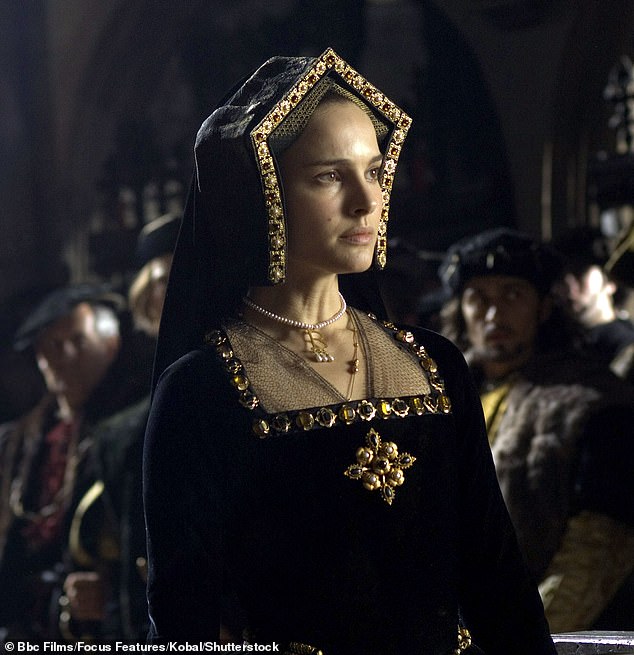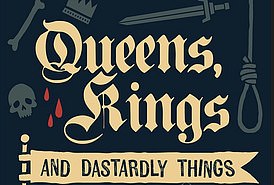As the second wife of King Henry VIII, she was the queen who was long persecuted and then brutally discarded.
But was Anne Boleyn, the mother of Queen Elizabeth I, really guilty of adultery with several men, including her own brother?
That’s the key question explored in the seventh episode of the Daily Mail’s new podcast Queens, Kings and Dastardly Things.
Mail columnist and royal biographer Robert Hardman and his co-presenter Professor Kate Williams examine the charges that led to Anne’s execution in 1536.
They also explore how exactly Anne came to be Henry’s second wife, and why she changed her mind about marriage after years of resisting the monarch’s advances.
Professor Williams says: ‘I think most people will have an idea of what Anne Boleyn’s fate was, but how did she end up at her final destination, the executioners’ field?
“What always fascinates me is how quickly it happened. She got married, she was queen in 1533; she was executed in 1536. We will wonder how guilty Anne Boleyn was, if she was at all.”
Was Anne Boleyn, Queen Elizabeth I’s mother, really guilty of adultery with several men, including her own brother? Above: Natalie Portman as Anne in the 2008 film The Other Boleyn Girl
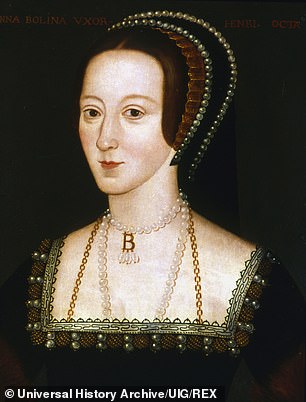
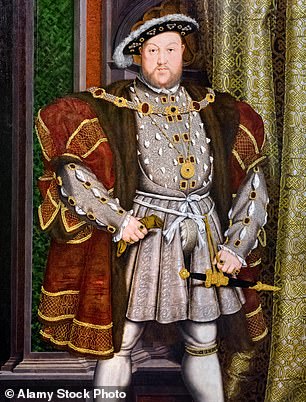
Anne Boleyn, the second wife of King Henry VIII, was beheaded on 19 May 1536 at the Tower of London.
Mr Hardman adds that Anne is “one of the greatest names in history, the inspiration not just for a royal divorce, but really for the divorce of an entire country from an entire religion”.
‘The mother of a great queen of England and possibly the most important and perhaps most influential queen consort England has ever had.’
Despite the enormous interest that Anne aroused throughout the centuries, there is still uncertainty about exactly when she was born.
She was born in 1501 or 1507. Professor Williams says: “If we choose 1501, she would have been about 25 when Henry saw her. Or if we choose 1507, she would have been 19.”
Anne came from a well-connected family: her father, Thomas, was a politician and diplomat, while her uncle, the Duke of Norfolk, was a brilliant soldier.
Young Anne had been a courtesan from an early age, having been sent to serve Queen Claude of France.
She returned to England to marry her cousin, but the union failed and she instead became a lady-in-waiting to Henry’s then wife, Catherine of Aragon.
Meanwhile, Anne’s sister Mary had won the King’s affection and had become his mistress.
In the spring of 1526, Henry turned his attention to Anne, who, according to Professor Williams, was initially “ambivalent” to his advances.
This was partly because the King had played a role in denying her the opportunity to marry her love match, Henry Percy, Earl of Northumberland.
Professor Williams says of the King: “I think Henry was particularly attracted by his wit, by his intelligence, by his knowledge and love of France.”
But she adds: “Most men wouldn’t want to date their lover’s sister. We may find it a bit distasteful, but for Henry it’s a recommendation.”
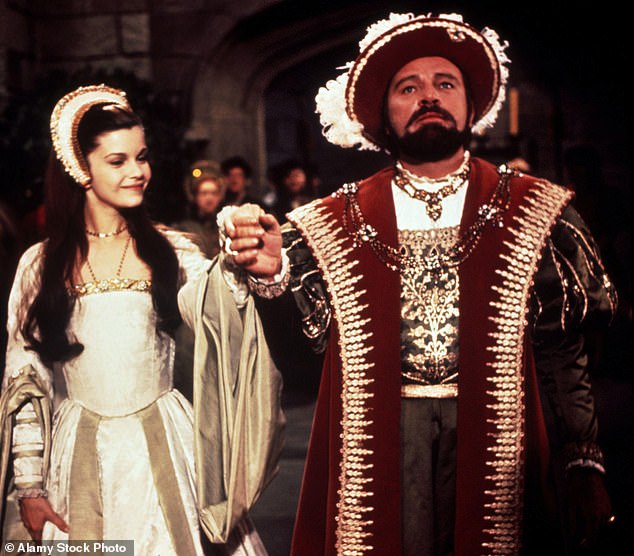
Richard Burton as King Henry VIII alongside Geneviève Bujold as Anne Boleyn in the 1969 film Anne of the Thousand Days
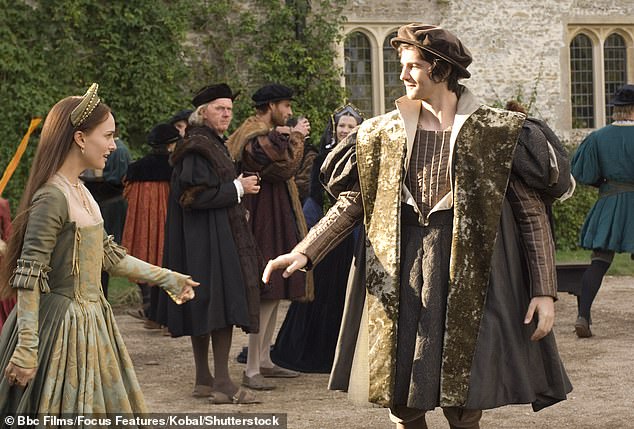
Anne was accused of incest with her brother George Boleyn. Above: Natalie Portman as Anne and Jim Sturgess as George in the 2008 film The Other Boleyn Girl
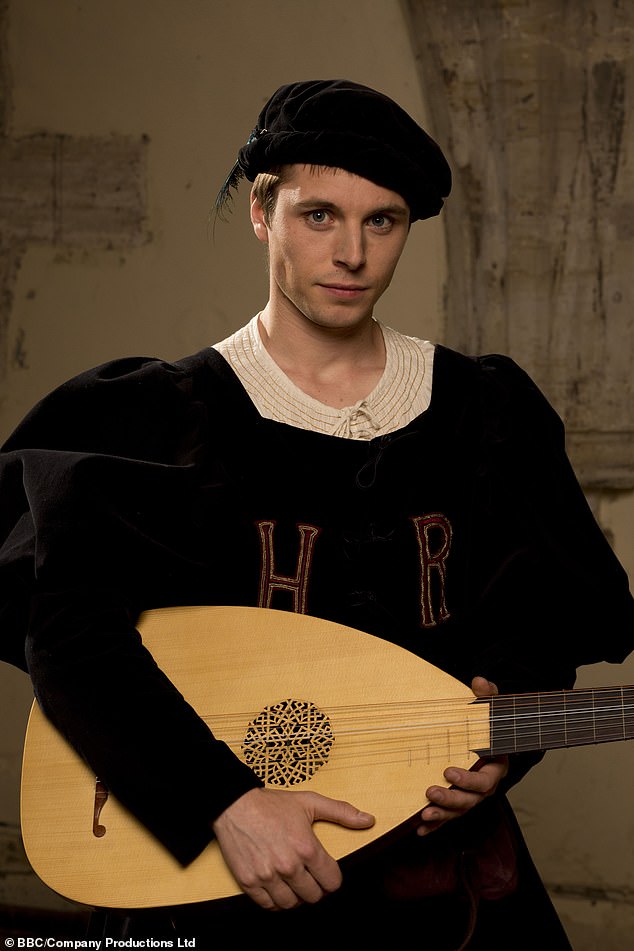
Max Fowler as musician Mark Smeaton in Wolf Hall, the BBC television production of Hilary Mantel’s novel of the same name
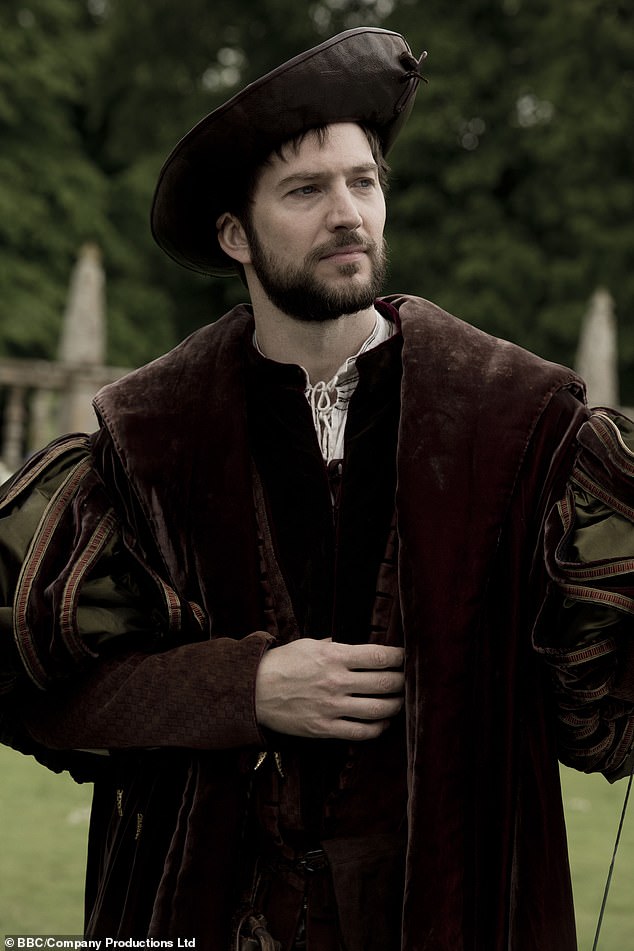
Luke Roberts as Henry Norris in the BBC show Wolf Hall
“Mary was a good housewife, so he thinks to himself: Well, Anna must be a good housewife, too.”
However, Anne refused to allow Henry to make her his mistress.
Professor Williams says she “really doesn’t like the idea” because she has seen her sister “being used and then abandoned” and that’s why she is “not that interested” in the King.
After retiring to his family’s estate, Heaver Castle, Henry sent her dozens of letters in an attempt to seduce her.
Eventually Anne succumbed to the king’s advances. Professor Williams says: “What these letters show is that Henry is serious about her.
“He doesn’t want to just use her as a mistress, cast her aside, and then discard her.”
But Catherine, who had fallen into disgrace with Henry for not being able to give birth to a son, did not allow the King to leave her aside.
The Pope refused to grant Henry an annulment, so the King triggered a radical break with the Catholic Church to get his way.
He was made head of the Church of England and appointed a new Archbishop of Canterbury, Thomas Cranmer, who allowed the annulment to go ahead.
Anne and Henry finally married, more or less secretly, in November 1532 and then announced the union to the public.
The king’s marriage to Catherine was annulled in May 1533, and just five days later Anne was crowned queen.
Anne, now visibly pregnant, was crowned with St Edward’s Crown, which was normally for the monarch, not the consort.
The crown was used to make her “legitimate,” says Professor Williams. But Anne was not popular with the general population, who still preferred Catherine.
Anne was also unhappy with the way, shortly after marrying Henry and becoming pregnant, the King was cavorting with his mistresses.
But the monarch told his wife that she had to put up with his infidelity.
Although astrologers and royal physicians had predicted that Anne would give birth to a son, much desired by Henry, in September 1533 she gave birth to a daughter.
Henry was hugely disappointed, but convinced that he and Anne could have more children together and that she would give him a male heir.
Meanwhile, there were tensions between Anne and Thomas Cromwell, largely due to their different visions of the future of the Church in England.
Both vied for the King’s ear in their attempts to ensure that their opinions were favored.
But in January 1536, Anne suffered the last of two miscarriages, leaving her and Henry devastated.
Anne lost her unborn child on the same day that Catherine of Aragon, who had died just a few days earlier, was buried.
Professor Williams explains that Catherine had been a “protection” for Anne because she could not be “cast aside” while her first wife was still alive.
And he adds: ‘When Catherine of Aragon dies, he begins to think: “Should I get rid of Anne too?”
Henry then turned his attention to Anne’s lady-in-waiting, Jane Seymour, who would become his third wife.
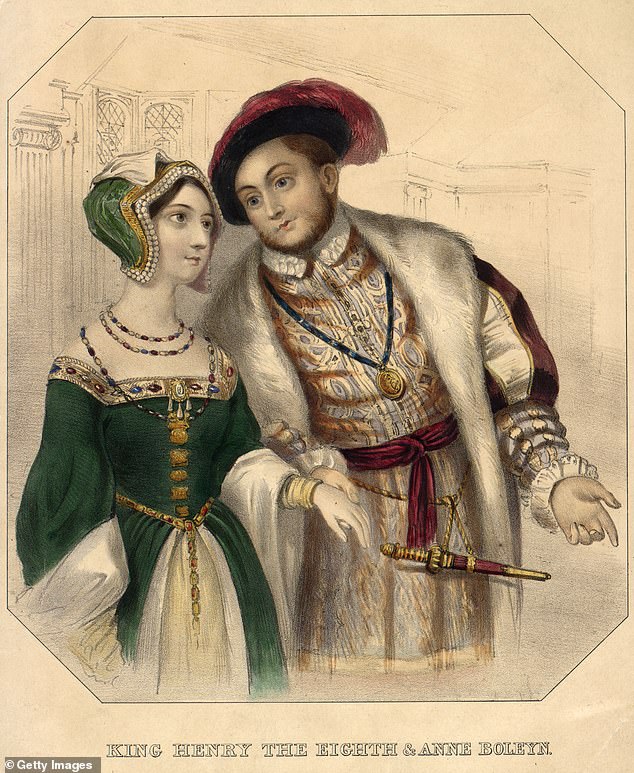
Henry and Anne had enjoyed a secret romance while Henry was still married to his first wife, Catherine of Aragon.
But the King knew that he could not divorce Anne, because of the impact this would have on his reputation after his separation from Catherine.
Instead, Cromwell considered how to end Henry’s marriage.
He set about trying to find out whether Anne, whose flirtation had initially made her popular with the King, was having affairs with men in her household.
Cromwell built a case against the Queen, alleging that she had had sexual relationships with men including the musician Mark Smeaton, the courtier Henry Norris and George Boleyn, her own brother.
Both Smeaton and Norris were sent to the Tower of London.
Anne was also arrested, along with her brother, and charged with adultery, incest and treason.
She was subjected to a sham trial before being held prisoner in the same royal apartment in the Tower of London where she had awaited her coronation.
On 19 May 1536, two days after her brother, Norris and Smeaton, were beheaded, Anne was executed.
In her final statement, she praised her husband.
She said: ‘Good Christian people, I have come here to die, because according to the law and by the law I am condemned to die, and therefore I will not say anything against it.
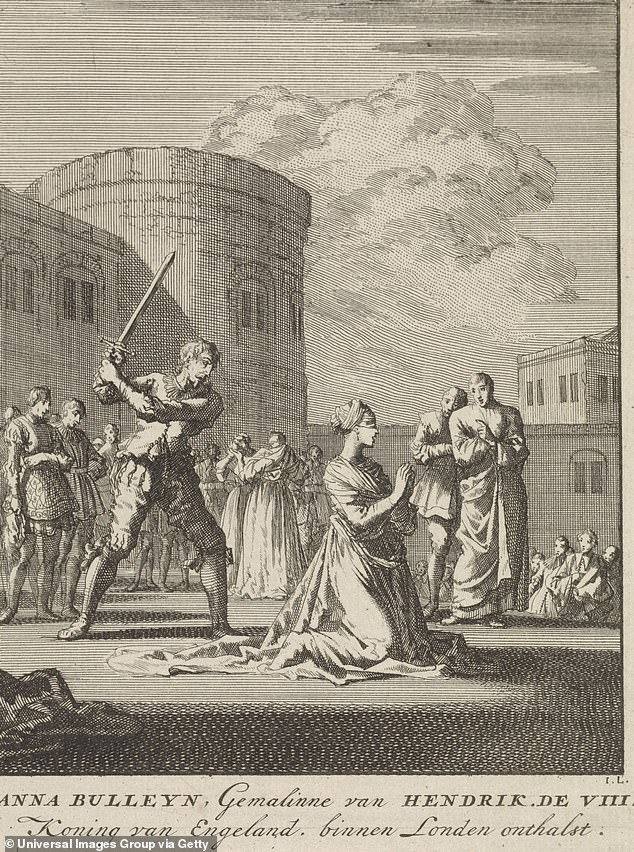
Anne was beheaded at the Tower of London. In her last statement before dying, she praised her husband. Above: depiction of her execution
‘I have not come here to accuse anyone or to say anything of what I am accused of and condemned to death, but I pray to God to save the king and send him to reign over you for a long time, because there has never been a more gentle or merciful prince, and for me he was always a good, gentle and sovereign lord.
‘And if any person wishes to interfere in my cause, I demand that he judge what is best.
‘And so I take leave of the world and of all of you, and I sincerely hope that you all will pray for me. Lord, have mercy on me, to God I commend my soul.’
But did Anne really commit adultery and incest, and how much did she love the King?
Find out Professor Williams and Mr Hardman’s verdict in episode seven of Queens, Kings and Dastardly Things, released today.
Robert Hardman is the author of books such as Queen of Our Times: The Life of Elizabeth II and Charles III: New King. New Court. The Inside Story.
Professor Kate Williams is the author of the recent book The Royal Palaces: Secrets and Scandals, along with many other works.


